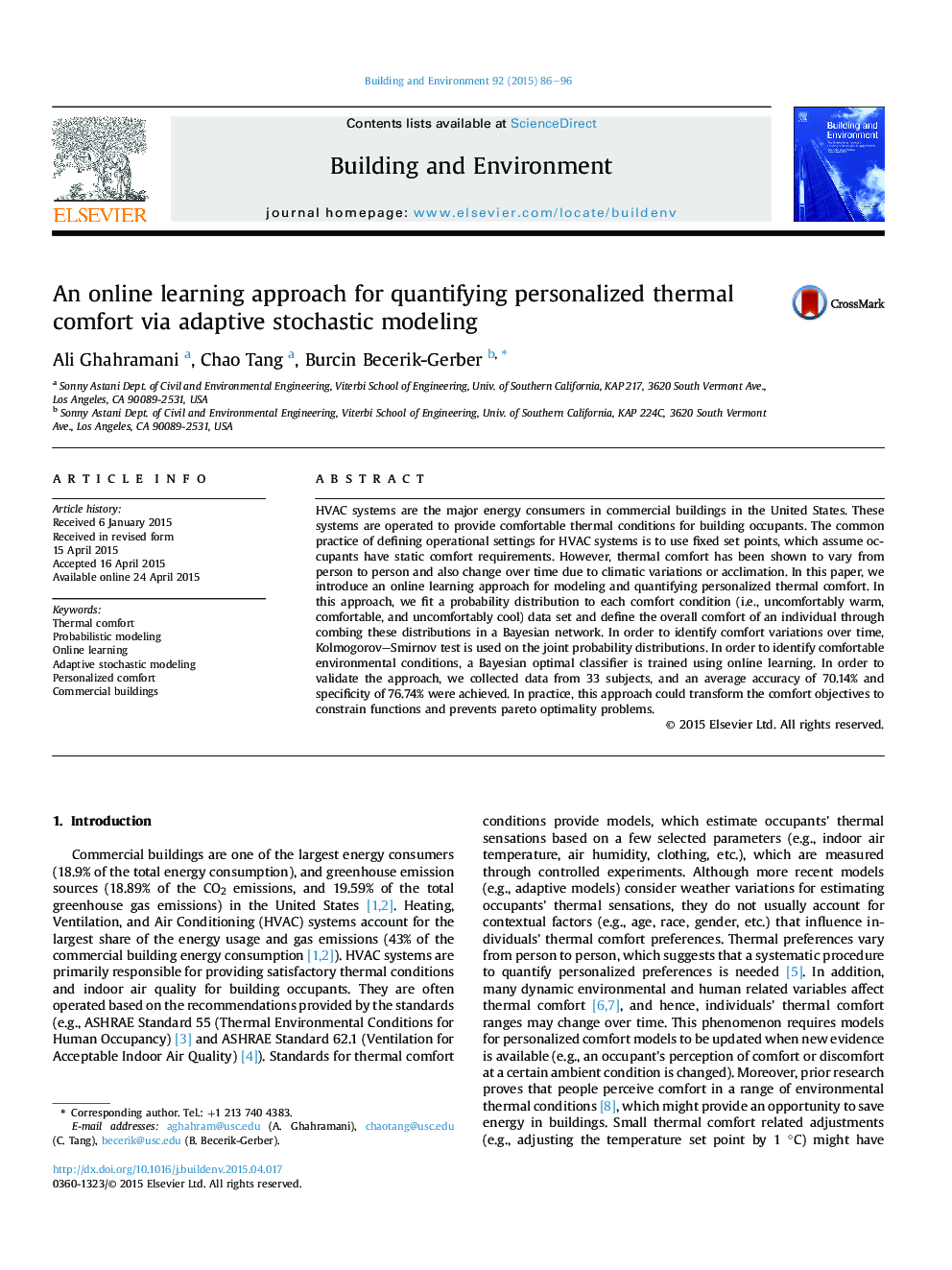| Article ID | Journal | Published Year | Pages | File Type |
|---|---|---|---|---|
| 6699652 | Building and Environment | 2015 | 11 Pages |
Abstract
HVAC systems are the major energy consumers in commercial buildings in the United States. These systems are operated to provide comfortable thermal conditions for building occupants. The common practice of defining operational settings for HVAC systems is to use fixed set points, which assume occupants have static comfort requirements. However, thermal comfort has been shown to vary from person to person and also change over time due to climatic variations or acclimation. In this paper, we introduce an online learning approach for modeling and quantifying personalized thermal comfort. In this approach, we fit a probability distribution to each comfort condition (i.e., uncomfortably warm, comfortable, and uncomfortably cool) data set and define the overall comfort of an individual through combing these distributions in a Bayesian network. In order to identify comfort variations over time, Kolmogorov-Smirnov test is used on the joint probability distributions. In order to identify comfortable environmental conditions, a Bayesian optimal classifier is trained using online learning. In order to validate the approach, we collected data from 33 subjects, and an average accuracy of 70.14% and specificity of 76.74% were achieved. In practice, this approach could transform the comfort objectives to constrain functions and prevents pareto optimality problems.
Related Topics
Physical Sciences and Engineering
Energy
Renewable Energy, Sustainability and the Environment
Authors
Ali Ghahramani, Chao Tang, Burcin Becerik-Gerber,
